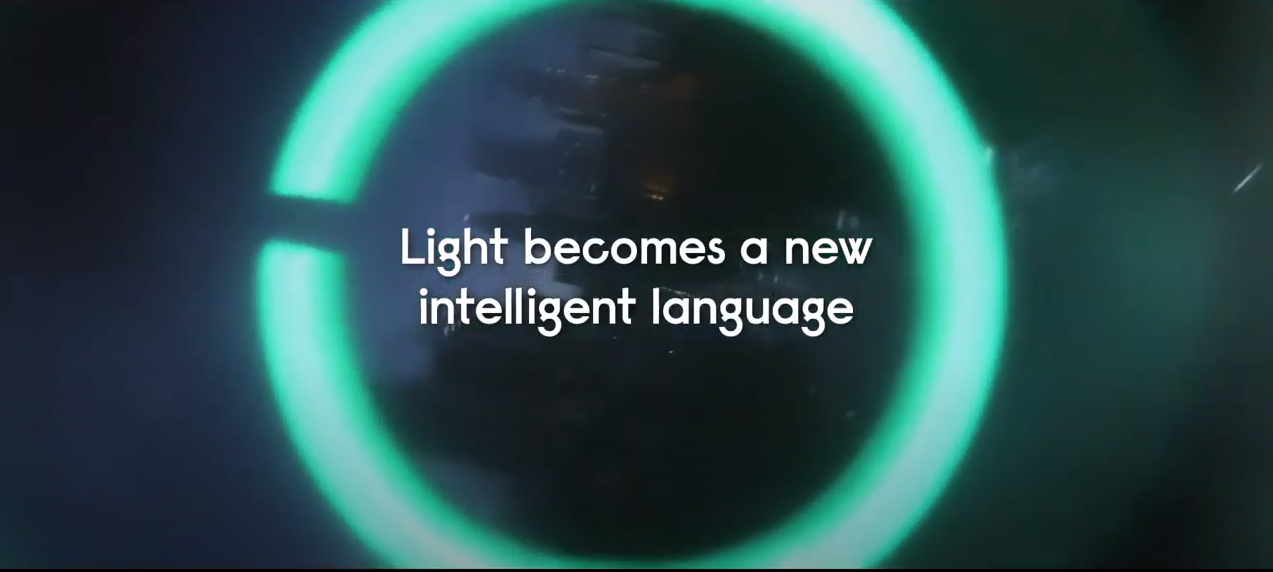Signify Joins HomeGrid Forum For The Expansion Of G.hn Technology Deployment With Li Fi Technology
A few days ago, HomeGrid Forum announced that Signify has joined the organisation for expanding the innovation and deployment of G.hn technology for Li Fi applications.
HomeGrid Forum
According to their website, HomeGrid Forum (HGF) is an industry alliance formed to support the development and deployment of a unified coaxial, phone line, powerline, and plastic optical fibre home networking technology called G.hn (Gigabit Home Networking). G.hn technology is based on standards developed by the UN’s International Telecommunications Union – Telecom (ITU-T) standards development organization.
HomeGrid Certification ensures compliance and interoperability (C&I) of silicon and systems through plugfests and rigorous C&I testing. A logo is issued for certified systems’ packaging and documentation of G.hn-based systems. HGF Certification ensures that retail customers and Service Providers have confidence in, and great satisfaction with all HGF G.hn Certified Certified products.
HomeGrid Forum members comprise an eco-system covering all aspects of the technology from Retailers to Service Providers, Utilities to Smart Grid think tanks, System Developers to Test Houses and Silicon Companies.
HomeGrid currently has four workgroups: a Clean Tech/Smart Grid/Smart Energy workgroup focused on in-home energy management and utility Distribution Automation and AMI applications for G.hn, a G.hn Contributions workgroup that continuously works to develop advanced enhancements for wired home networking, a Compliance & Interoperability workgroup, and a Marketing workgroup focused on promoting all HomeGrid Certified Products and technologies.
The purpose of HomeGrid Forum is to:
Lead the work within the ITU-T to continuously expand G.hn, through a sustained effort to improve and extend this advanced home networking technology for any in-home wiring (coaxial cable, phone line, powerline and plastic optical fiber).
Encourage and evangelize the adoption and widespread deployments of G.hn by Service Providers and through Retail channels.
Provide a clear migration path for all legacy wired technologies to G.hn, where coexistence and G.hn’s ability to work over any wire type enables Service Providers to extend the life of their existing network investments while increasing coverage, robustness, and throughput in the home.
Maintain a comprehensive compliance and interoperability program to promote an ecosystem of compliant silicon and interoperable products based on the ITU-T G.hn standards.
Livia Rosu, HomeGrid Forum President, stated: “This is an extremely exciting time for the LiFi community, and we are thrilled to welcome Signify as a Contributor member. Together we will enable innovation and network infrastructure that are fully interoperable with a growing number of devices, at a time when demand for reliable and secure connectivity is increasing”.
Livia Rosu further stated that “LiFi will build on an open standard to ensure full interoperability and widespread market acceptance. Signify’s expertise will be instrumental as the Forum continues to innovate G.hn technology for LiFi use cases in airports, banks, factories, government and defence organizations – all of which require simultaneous high security and low latency connectivity.”
Signify
Signify is the new brand name of Philips Lighting. The name change occurred in March 2018 to represent the transformation from an analogue lighting company into digital lighting and Internet of Things (IoT) company. Signify is the world leader in lighting for professionals, consumers and lighting for the Internet of Things. The company provides lighting solutions for professional segments such as automotive, healthcare, horticulture, office, outdoor, phototherapy, petrol stations, solar, purification, schools, fashion, cinema, and more. These lighting solutions include indoor and outdoor luminaires, lamps, electronics, lighting controls, lighting control software, IoT systems and platforms.
Signify has also other brands under its belt such as Philips, Interact, Modular Lighting Instruments, Luceplan, Color Kinetics, ILTI Luce and Philips Hue.
“Standardization is the cornerstone for LiFi interoperability, which is an essential condition for lowering barriers to adoption, encouraging competition and innovation, and building consumer confidence,” said Musa Unmehopa, Head of Ecosystems and Strategic Alliances at Signify. “We join HomeGrid Forum to grow the LiFi ecosystem in which we collectively create and build a global market where we can all compete effectively and serve consumers.”
Dr. Leonard Dauphinee, Vice President and CTO of Broadband Products at MaxLinear added: “Signify’s Trulifi product series is embedding MaxLinear’s G.hn chipsets to modulate the light waves to transmit data and to provide backhaul over existing wires, such as powerline. By leveraging their lighting infrastructure, Signify customers get the best of both worlds: a great lighting experience and a high speed wireless G.hn-encoded LiFi connection with a reliable G.hn wired backbone.”
Trulifi system
In 2019, Signify launched a new Li-Fi system called “Trulifi”. Trulifi uses light waves to enable highly reliable, secure two-way wireless communications at speeds far above most conventional workplace wireless technologies.
Trulifi uses optical wireless transceiver technology built, or retrofitted, into Philips luminaires. This means customers do not have to replace their existing lighting infrastructure to receive great quality light and wireless connectivity.
The new Li-Fi system comprises of a USB Network Access adapter, Li-Fi enabled LED lights and a Trulifi-6002 Plug-In Optical Transceiver. The Trulifi-enabled luminaires can provide wireless connectivity at speeds up to 150 Megabits per second (Mbps) over large spaces, such as meeting rooms and office floors. There is seamless handover between each Trulifi-enabled luminaire enabling users to roam around. The speed is fast enough to stream simultaneously 30 1080p HDTV movies. A USB-access key, plugged into a laptop, is needed to receive the LiFi signal and acts as an emitter to send data back to the luminaire.
The Trulifi range also includes a fixed point-to-point system, up to 250 Mbps speed, which acts as a wireless cable. This is ideal for mobile devices connectivity. This Li-Fi system can also be useful to connect robots or machines in radio frequency (RF) harsh environments like industrial plants, or hospitals where RF communications may not be permitted, or where there’s a need to send and receive large data files securely and quickly. Currently, Trulifi is aimed at professional markets, including offices, hospitality, retail, industry, construction and healthcare.
What is Li Fi?
Li-Fi, also known as "Light Fidelity" is a wireless optical networking technology, which uses light-emitting diodes (LEDs) to transmit data. In 2011, professor Harald Haas made a Li-Fi demonstration at the TED (Technology, Entertainment, Design) Global Talk on Visible Light Communication (VLC).
VLC uses light as a medium to deliver high-speed communication like Wi-Fi and complies with the IEEE standard IEEE 802.15.7. The IEEE 802.15.7 is a high-speed, bidirectional, and fully networked wireless communication technology-based standard similar to Wi-Fi's IEEE 802.11.
How does Li Fi work?
Li-Fi is a high speed, bidirectional, and fully networked wireless communication of data using light. Li-Fi constitutes of several light bulbs that form a wireless network.
When an electrical current goes through to a LED light bulb, a stream of light (photons) emits from the lamp. LED bulbs are semiconductor devices, which means that the brightness of the light flowing through them can change at extremely high speeds. The signal is sent by modulating the light at different rates. The signal can then be received by a detector that interprets the changes in light intensity (the signal) as data. Also when the LED is ON, you transmit a digital 1, and when it is OFF, you transmit a 0.
Li Fi Benefits
The primary benefits of Li-Fi are as follows:
• Security: Provides entirely secure access. Where there is no light there is no data.
• Safety: Does not produce electromagnetic radiation and does not interfere with existing electronic systems.
• Localisation: Allows localisation due to the small coverage area of Li-Fi access point - localisation can be used for very precise asset tracking.
• Data density: Provides ubiquitous high-speed wireless access that offers substantially greater data density (data rate per unit area) than RF through high bandwidth reuse.
Credit to Signify
Li Fi Applications
Li-Fi can be used for so many applications and the list is increasing every year. You can read our updated list of Li-Fi applications at the following link:
Credit to pureLiFi
In conclusion, if you are also interested to hear more information about the OWNII Coin, investing in it, or enquire about Li-Fi devices such as the LiFiMax and Trulifi, you can contact us through our chatbot or by sending an email through our contact us form. If you enjoyed this post and would like to hear more updates about Li-Fi technology, subscribe to our newsletter. Don’t forget to subscribe to our social media accounts. You can also join our Telegram group about Li-Fi technology on this link:
https://t.me/joinchat/FMzOmsEKyJFrU6Af





